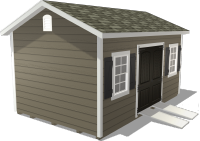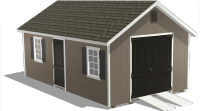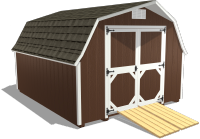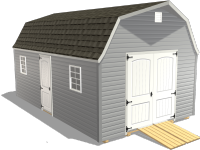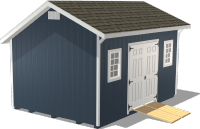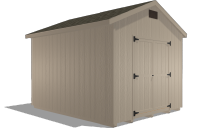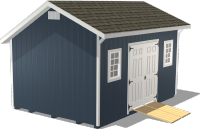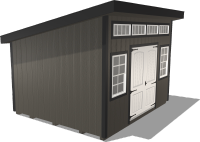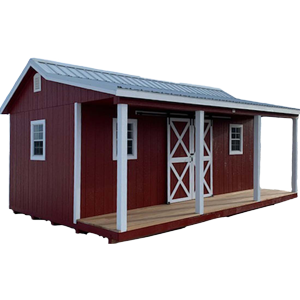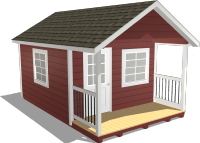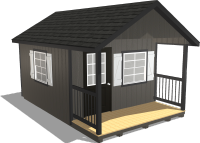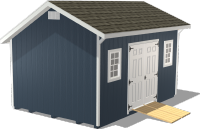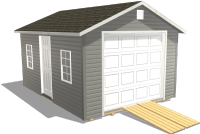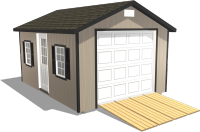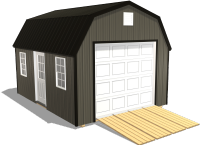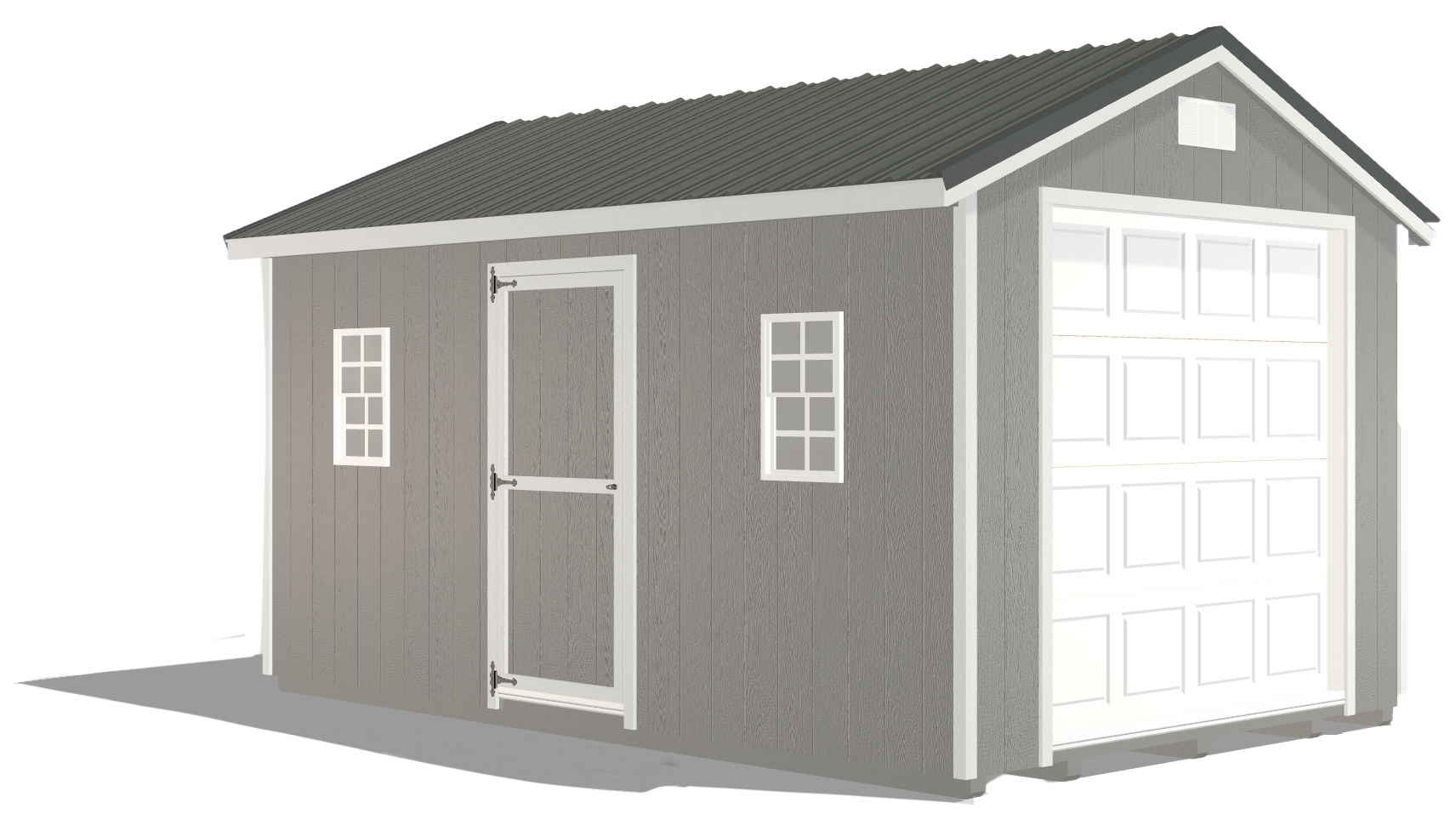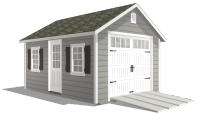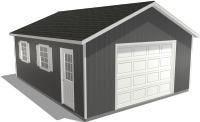Backyard Chicken Coop Placement: Find the Perfect Spot for Happy Hens
by Dakota Storage Buildings, on October 08, 2025

Raising happy and healthy backyard chickens starts with where you put their coop. The location of your chicken coop can make or break your setup. A poorly placed coop can lead to unhappy hens, inconvenient daily care, and even safety issues. On the other hand, a thoughtfully placed coop promotes better egg production, easier maintenance, and a healthier, happier flock.
Before you buy chicken coops, take the time to evaluate your yard’s layout, sun exposure, accessibility, and safety. A little planning on chicken coop placement now can save you a lot of trouble later.
Why Where You Place Your Coop Matters More Than You Think
Your chickens' health and productivity are directly tied to where you place their home. A coop that’s stuck in a damp, shaded corner of the yard might encourage mold, frozen waterers in the winter, and even predator access. Stressful environments can reduce egg production and impact the overall well-being of your flock.
However, a well-placed coop supports:
- Cleaner, drier conditions
- Better ventilation and temperature control
- Easier daily care and access
- Protection from predators and bad weather
That’s why smart chicken coop placement is essential.
What to Look for in Your Yard Before Placing a Coop
Take a few minutes to evaluate your yard with a chicken’s-eye view before you buy chicken coops. The right location will support your flock’s health, simplify your daily routine, and help your coop last longer with less upkeep. Choosing a poor location can create long-term headaches, like soggy ground, hard-to-access paths, or reduced egg production due to stress and poor lighting.

Start by walking your yard and paying attention to the following factors:
- Size and Layout: Make sure you have enough open space for the coop, but also for future additions like a chicken run or dust bath.
- Drainage and Slope: Avoid low-lying areas where water pools after it rains. Well-drained or slightly elevated ground is ideal.
- Wind Exposure: Watch how wind moves through your yard and avoid spots that create cold drafts or wind tunnels.
- Obstacles: Consider how trees, fences, or sheds might block sunlight, airflow, or access to the coop.
These simple observations help you build a strong foundation, literally and figuratively, for your chicken coop. Planning for both current and future needs ensures that your setup will stay functional as your flock grows.
Maximize Egg Production With Sunlight and Airflow
When it comes to happy, healthy hens, sunlight and airflow are two of the most important factors to get right. Proper sun exposure keeps your flock comfortable and can directly affect how many eggs you’ll collect. Chickens are more productive when exposed to consistent daylight, especially morning sun, which helps regulate their natural laying cycle.

Here are a few simple tips to make the most of sunlight and airflow:
- Face the coop east or southeast so it catches the morning sun.
- Avoid placing it in direct afternoon sunlight, especially during the summer.
- Use shade from nearby trees or structures for natural cooling.
- Ensure good airflow around the coop by avoiding tight corners or placing it too close to fences.
The materials your coop is built with can make a difference. At Dakota, our coops feature LP® Tech Shield® Roofing Sheathing with Radiant Barrier, which reflects heat and keeps the interior cooler, helping your hens stay comfortable even on hot days. Pair smart placement with quality construction, and you’ve got a winning setup for year-round egg production.
The Closer the Coop, the Easier the Chores
One of the biggest mistakes new chicken owners make is placing their coop too far from the house. While it might look nice tucked into a distant corner of the yard, that distance can quickly become a chore, especially in bad weather or when you're carrying feed, water, or eggs.
When choosing a location, consider:
- Proximity to the House: You’ll be visiting daily for feeding, cleaning, and egg collection. A shorter walk makes all the difference.
- Access to Water and Electricity: Running a hose or extension cord across the yard gets old fast, and may even become unsafe or inconvenient over time.
- Clear Walking Paths: In winter, you’ll want a shovel-friendly route and no icy hills to climb just to reach your flock.
It might seem like a small thing now, but placing your coop for easy access can make chicken keeping more enjoyable and sustainable. Your future self will thank you for setting up a coop that’s easy to reach, even during snowstorms or summer storms.
Keep Your Flock Safe With Smart Chicken Coop Placement
You’re not the only one who finds your chickens appealing—so do predators. From raccoons and foxes to snakes and even hawks, backyard flocks are at risk without the right precautions. Where you place your coop plays a big role in how safe your chickens will be.
Here are a few safety tips to keep in mind:
- Avoid placing the coop near tall grass or wooded areas where predators can hide and wait until nightfall.
- Install fencing and consider motion-sensor lights to deter nocturnal visitors and provide peace of mind.
- Choose higher ground that won’t flood during heavy rain or become icy and dangerous in the winter.
Your coop’s construction matters too. All of our quality chicken coops are built with durable materials, solid floors, and secure locks, so your flock stays safe, warm, and dry, no matter what nature throws at them.
Give Yourself Room to Expand Your Flock
It’s easy to focus on today’s needs when choosing a coop spot, but what about next year? As your flock grows or your backyard goals evolve, you’ll want to make sure your setup can grow with you.
Think about how your coop fits into the bigger picture:
- Leave space for a run, dust bath, or future free-range area so your hens have room to move and stay healthy.
- Consider chicken coop placement near a garden or compost bin to make use of chicken manure and give chickens access to insects and weeds (a win-win for pest control and fertilization).
Planning ahead now gives you flexibility later. With a little foresight, you can avoid having to move your entire setup, or worse, starting over from scratch.
What Not to Do (and What to Do Instead) When Placing Your Coop
Even with the best coop on the market, the wrong chicken coop placement can cause unnecessary headaches. Many common mistakes are avoidable with a little awareness and planning upfront.

Avoid these chicken coop placement pitfalls:
- Placing the coop on soggy, low ground that floods after every rain, leaving your chickens damp and miserable.
- Tucking it behind a structure like a fence or garage that blocks crucial morning light and airflow.
- Surrounding the coop with clutter, which limits ventilation and makes it harder to clean or access your chickens.
Instead, try these chicken coop placement strategies:
- Choose a spot that’s slightly elevated or install gravel or concrete footers to help with drainage and stability.
- Locate your coop where it receives morning sun to help warm the flock and encourage egg production, while also benefiting from afternoon shade.
- Keep at least 2–3 feet of open space around the coop to allow for air circulation and easy access during cleaning and maintenance.
These practical steps can go a long way in keeping your chickens healthy and your daily routine stress-free. A little planning now means a lot fewer problems later.
Placement Matters, and So Does the Right Coop
Chicken coop placement is a key part of creating a successful, enjoyable chicken-keeping experience. With the right location, you can enjoy a healthier flock, better egg production, and easier day-to-day care.
At Dakota, we design quality chicken coops that are built to last and easy to maintain. Whether you’re just starting out or looking to buy chicken coops to upgrade your setup, we’re here to help you make the right choice.
Ready to get started? Download our free guide, Evaluating Best-Fit Quality Chicken Coops, or browse our customizable coops to find the perfect match for your backyard.



